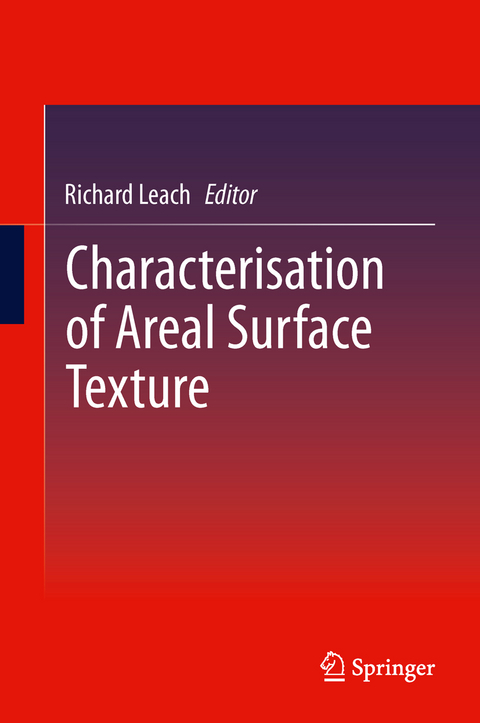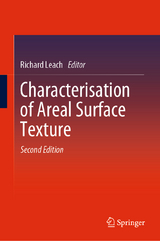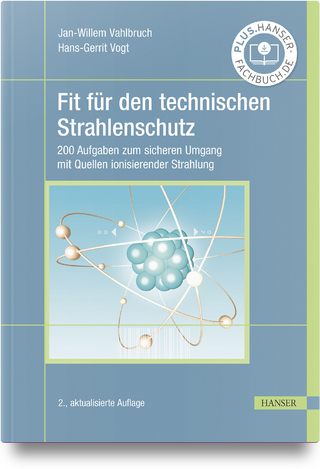Characterisation of Areal Surface Texture
Springer Berlin (Verlag)
9783642364570 (ISBN)
- Titel erscheint in neuer Auflage
- Artikel merken
The function of a component part can be profoundly affected by its surface topography. There are many examples in nature of surfaces that have a well-controlled topography to affect their function. Examples include the hydrophobic effect of the lotus leaf, the reduction of fluid drag due to the riblet structure of shark skin, the directional adhesion of the gecko foot and the angular sensitivity of the multi-faceted fly eye. Surface structuring is also being used extensively in modern manufacturing. In this way many properties can be altered, for example optical, tribological, biological and fluidic. Previously, single line (profile) measurements were adequate to control manufacture of surfaces, but as the need to control the functionality of surfaces increases, there is a growing need for three-dimensional (areal) measurement and characterisation techniques. For this reason there has been considerable research, development and standardisation of areal techniques. This book will present the areal framework that is being adopted by the international community. Whereas previous books have concentrated on the measurement aspects, this book concentrates on the characterisation techniques, i.e. how to interpret the measurement data to give the appropriate (functional) information for a given task. The first part of the book presents the characterisation methods and the second part case studies that highlight the use of areal methods in a broad range of subject areas - from automobile manufacture to archaeology.
Contents
Introduction to Surface Topography
The Areal Field Parameters
The Areal Feature Parameters
Areal Filtering Methods
Areal Form Removal
Areal Fractal Methods
Choosing the Appropriate Parameter
Characterisation of Individual Areal Features
Multi-Scale Signature of Surface Topography
Correlation of Areal Surface Texture Parameters to Solar Cell Efficiency
Characterisation ofCylinder Liner Honing Textures for Production Control
Characterisation of the Mechanical Bond Strength for Copper on Glass Plating Applications
Inspection of Laser Structured Cams and Conrods
Road Surfaces
Professor Richard Leach works at National Physical Laboratory, Teddington, UK, since 1990. He is a visiting Professor of the Wolfson School for Mechanical and Manufacturing Engineering, Loughborough University. His current position is Principal Research Scientist in the Mass & Dimensional Group, Industry & Innovation Division. He is the lead scientist on three DIUS National Measurement System Engineering Measurement Programme projects: areal surface texture and structured surfaces metrology, development of low force transfer artefacts and probes for micro-coordinate measuring machines. He is also lead scientist on projects funded by DIUS Measurement for Innovators (MfI), EPSRC and EU. Professor Leach is the Measurement Service Manager for the Engineering Nanometrology Measurement Service at NPL.
Introduction to surface topography.- The areal field parameters.- The areal feature parameters.- Areal filtering methods.- Areal form removal.- Areal fractal methods.- Choosing the appropriate parameter.- Characterization of individual areal features.- Multi-scale signature of surface topography.- Correlation of areal surface texture parameters to solar cell efficiency.- Characterisation of cylinder liner honing textures for production control.- Characterization of the mechanical bond strength for copper on glass plating applications.- Inspection of laser structured cams and conrods.- Road surfaces.
| Erscheint lt. Verlag | 20.4.2013 |
|---|---|
| Zusatzinfo | XII, 353 p. 263 illus., 151 illus. in color. |
| Verlagsort | Berlin |
| Sprache | englisch |
| Maße | 155 x 235 mm |
| Gewicht | 680 g |
| Themenwelt | Naturwissenschaften ► Chemie ► Physikalische Chemie |
| Naturwissenschaften ► Physik / Astronomie ► Festkörperphysik | |
| Technik ► Maschinenbau | |
| Schlagworte | Optical instrumentation • Surface characterization • Topography measurement • Topologie |
| ISBN-13 | 9783642364570 / 9783642364570 |
| Zustand | Neuware |
| Informationen gemäß Produktsicherheitsverordnung (GPSR) | |
| Haben Sie eine Frage zum Produkt? |
aus dem Bereich





